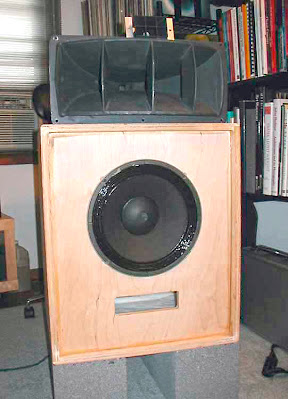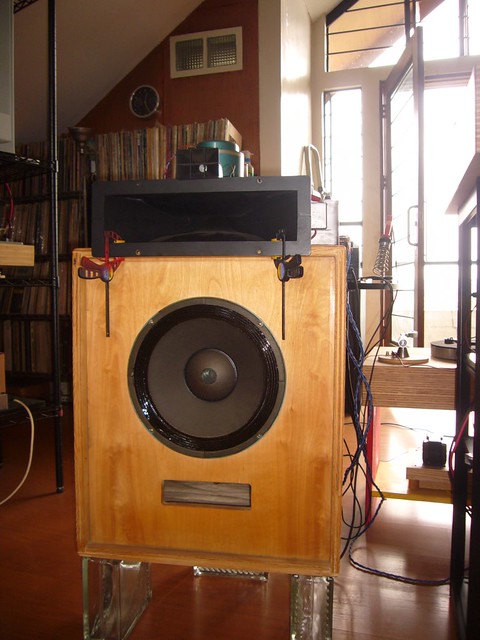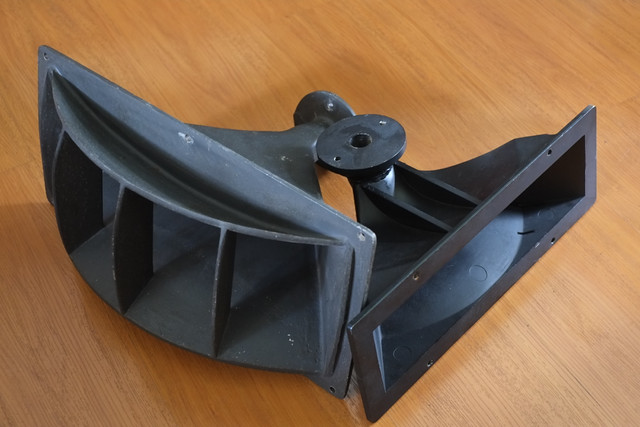Truth be told, I was never fully satisfied with the performance of the Altec 2-way which is why I never uploaded the old article in the Arkiv.
 |
| Altec 614 cabinet plan |
 |
| Note damping is applied only on two sides and the back. |
802D compression drivers replaced the smaller magnet 804As
+ super tweets...
 |
| Altec 3000H |
Series crossover
 |
| N1600C clone |
 |
| ca. 2006 |
Lessons learned over the past 15 years
- Choose a woofer with excellent midrange characteristics.
- In hindsight, the 804A/811 was a much easier combination to tame than the 802D/811. Perhaps this is due to the smaller magnet on the 804A which makes it 3dB less efficient. Note: the 806A is similar in specs to the 804A but some sources say they are built differently.
- Horns sound better crossed over at least one octave above its rated cut off. I'd go as high as possible if my woofer can play well into the upper midrange.
- Don't be afraid to pad down the compression driver which is at least 10dB more efficient than the woofer.
- Try series type crossovers like the Altec N1600C above or N1500A which have lower insertion loss due to the 1st order/6dB/octave low pass filter. Note: the high pass section = 2nd order 12dB/octave
- I only use paper in oil caps in my crossover.
811>32C
 |
| Altec 32C/802D + Altec 3000 trial ca. 2009 |
Replacing the 811 horns with the 32Cs transformed the 2-way horn system. The 32C/802D blended with the 414A/614 without any crossover alteration. If the 811 projects an in your face/front row seat perspective, the 32C is more like sitting at the middle to back row seat wherein instruments and/or vocals have been given enough time to reverberate in the concert hall. Exactly the kind of sound perspective I prefer!
Despite its polite and refined presentation, the 32C retains the transient speed, dynamic ability and top end extension expected from a horn such that I found the use of 3000H horn super tweeters redundant. In fact extreme high frequencies from 32C/802D sounded airier than the 811/802D + 3000H combo. I have a feeling that most detractors of the 90° bent horn design never heard an original Western Electric 753C, Western Electric 757A or even the more recent Altec 9849 monitor speaker.
Although there's another tweak I am experimenting with at the moment, this horn is here to stay. As Johnny Hartmann sings, "...it's wonderful..."









































